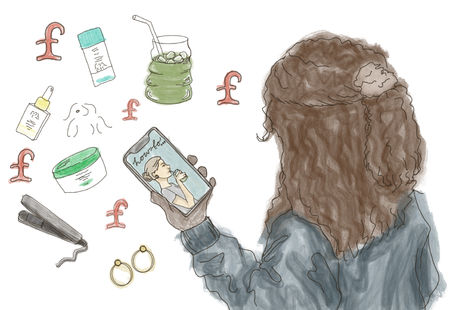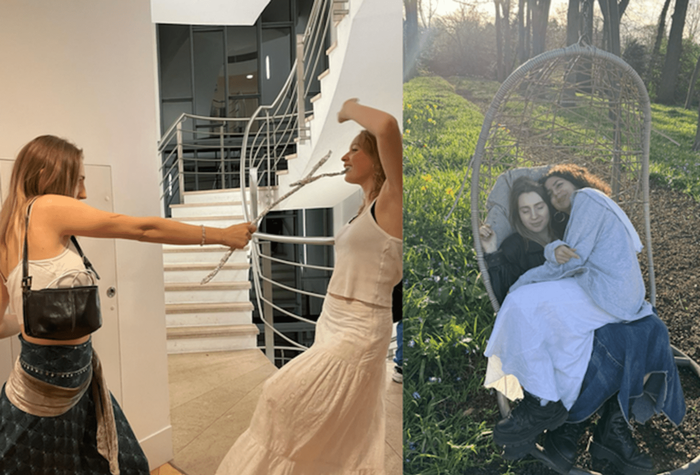Effortless or exclusionary? The problem with the ‘clean girl’ aesthetic
Ava Connors explores how the ‘clean girl’ trend could be inaccessible and may carry harmful connotations

Earlier this year, a debate emerged on my college’s student Facebook page about Cambridge’s preference for the ‘clean girl’ makeup look. Popularised on TikTok, the look aims for a polished finish – think ‘no-makeup makeup’ and ‘off-duty model’ outfits. Largely targeting young women, it aims for wellness, minimalism, and undetectable work. However, successfully pulling it off requires a considerable amount of time, money, and effort. Also, while promoting women who engage in the aesthetic (this demographic being mostly white and wealthy), other fashion aesthetics are typically degraded and devalued in the process. As one member put it during the debate, “makeup and class have a significant symbolic relationship”, noting that “heavier makeup is indexically and discursively linked to working-class women and their aesthetic labour”.
Epitomised by the recent shift from ‘BBLs’ and the ‘slim-thick’ physique to the ‘Pilates look’ on social media, women’s bodies have historically gone in and out of fashion. They are, in effect, trends. Changes in these trends are often led by the elite; the clean girl was pioneered by celebrities like Hailey Bieber and Bella Hadid who influenced the dominant style away from the glam look. Whilst this impacts women from all backgrounds, the economic demands of the ever changing idea of femininity especially burden working-class women. Whenever a trend becomes accessible through cheaper products and online tutorials, the elite shifts what’s popular to something new and exclusive. This is why the heavy glam look of 2016 gave way to the clean girl aesthetic which requires expensive skincare, makeup, and organic foods.
“The economic demands of the ever changing idea of femininity especially burden working-class women”
In spaces like Cambridge, where educational and social elitism historically prevail, certain styles earn a person symbolic capital, whilst others subject them to symbolic violence. These terms are both is is defined as subtle and sometimes invisible mechanisms of establishing social hierarchies through cultural norms, values, and behaviours. Symbolic violence harms one’s identity and self-perception. It can lead to alienation, pushing students to feel excluded from the University community. Some students have expressed experiences of judgement, reporting being stopped by college porters and asked for student ID. A member of the debate remarked, “Until you have been continuously stopped by staff for ID and questioned by other students if you even go here you won’t understand that it is quite deep”.
These experiences are rooted in racism and classism. Depictions of the clean girl on social media are dominated by white women. A researcher at the Berkeley School of Information found that TikTok’s feedback loop makes it harder for creators of colour to gain notoriety and reduces their influence on popular trends. Thus, credit for elements of the aesthetic, such as the slick back bun, have been attributed to white creators – despite it being popular in Black and Latin cultures for decades. While women of colour who wore the slick back bun or laid edges have faced generations of stigmatisation, being called ‘ghetto’ or told that the hairstyle is ‘unprofessional’, it became popular after being appropriated by white women.
“Credit for elements of the aesthetic, such as the slick back bun, have been attributed to white creators – despite it being popular in Black and Latin cultures for decades”
This highlights how the foundation of the ‘clean girl’ aesthetic is based on cultural appropriation, allowing some women to profit from the trend whilst simultaneously marginalising others on the grounds of race.
The clean girl also reproduces the historical connection between poverty and hygiene. Industrialization of the 19th Century meant that overpopulation of cities, water contamination, and poor living conditions led to the spread of diseases like cholera in poorly built and overcrowded city slums. Middle and upper-class Victorians, in an era where cleanliness amounted to to Godliness, perceived the slums to signify the immorality of the lower-classes. The name ‘clean girl’ suggests the existence of its diametric, the ‘dirty girl’. If economic barriers, such as inability to afford high-end products like Glossier and Drunk Elephant, exclude women from the aesthetic then are they to be thought of as unclean or immoral? The association is harmful; an aesthetic that demands luxury beauty consumerism cannot be thought of as accessible in a society where period and hygiene poverty leaves millions without the necessities.
“An aesthetic that demands luxury beauty consumerism cannot be thought of as accessible in a society where period and hygiene poverty leaves millions without the necessities”
It should be emphasised that it is not wrong to participate in the aesthetic. It can be fun to partake in and experiment with fashion. The issue is not at the individual level, but at the macro; the clean girl is perceived as morally and aesthetically superior for being ‘on trend’ whilst other styles are looked down upon. What brought confusion during the original debate on my college Facebook page was that, on the surface, women not having to wear makeup if they don’t want to is a good thing. However, at its core, the problem is not about this. As one student wrote: “Whilst the clean girl/make-up free aesthetic can be seen as empowering for many, it [is] also inherently racialised and classed in a way that doesn’t make it very viable for specific marginalised groups to achieve or be celebrated for wearing”. The clean girl is more than a natural style. ‘Clean girl’, it rewards an affluent pocket of society for lifestyle choices and products far out of reach for the majority, while creating a harmful and narrow vision of ideal femininity.
 News / Sidney May Ball cancelled6 November 2025
News / Sidney May Ball cancelled6 November 2025 News / Climate protesters rally against the Careers Service5 November 2025
News / Climate protesters rally against the Careers Service5 November 2025 News / Students launch women’s society excluding trans women31 October 2025
News / Students launch women’s society excluding trans women31 October 2025 News / Students allowed to use AI, says new uni guidance31 October 2025
News / Students allowed to use AI, says new uni guidance31 October 2025 Theatre / Hitler at the ADC? These guys pull it off5 November 2025
Theatre / Hitler at the ADC? These guys pull it off5 November 2025










